Commercial intensive farming can be laborious. However, by applying automation and innovation, farms can reduce manual toil while improving both the yield and the quality of their produce.
Kok Fah Technology Farm
Leafy greens grower Kok Fah Technology Farm (KFTF) is among the farms making headway in leveraging new technology to produce higher yields. Mr Wong Kok Fah and his brothers succeeded their father’s vegetable farming business in 1979. Today, the farm is run by second and third-generation family members.
Through the years, KFTF has been a forerunner in test-bedding and adopting automation and innovation. Some examples include:
Drip irrigation-and-fertilisation (‘fertigation’) system
This trial combines and automates both watering and fertilisation processes, and is part of a larger research project about cultivating vegetables using multi-tier structures and coco peat (a combination of coconut husk fibre and decomposing plant materials).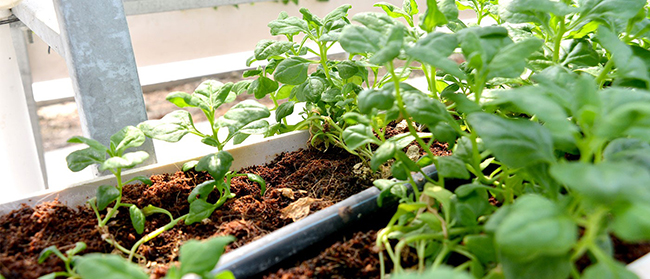
Automatic earth flow composting
This system helps to transform vegetable waste into high quality compost, speeding up crop cycles and adding more harvest cycles. It also cuts down the time needed to generate compost from 30 days to just one day.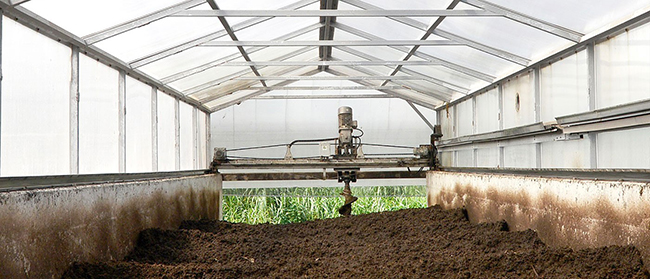
Mechanising the seeding process
This reduces manpower needs while increasing the vegetable growth rate by 20 percent.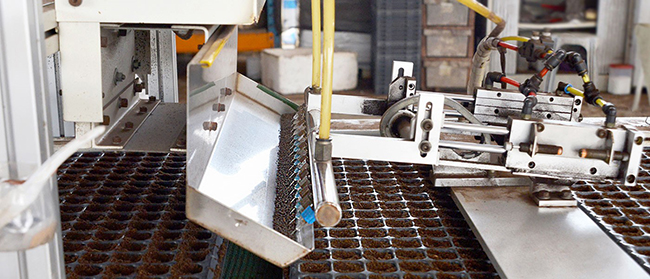
Marine Life Aquaculture
Technology and automation are truly the way to go in increasing productivity. Marine Life Aquaculture used to take a week to manually transfer 100,000 fish fingerlings from land to offshore sea cages 100 metres away. Now, with a new live fish pump, the process is automated and takes just one day. Fingerlings can also be automatically graded and counted via integrated imaging and scanning technologies.
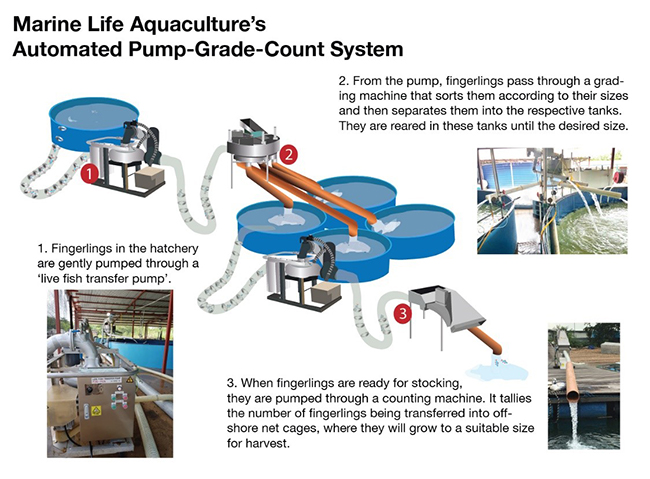
Seng Choon Farm
Established in the 1980s, Seng Choon is another long-surviving Singaporean agricultural business that has become more productive than ever. Its climate-controlled poultry housing system allows for automated feeding, egg collection, and manure collection. Elsewhere in the production process, an egg grading machine ensures that only high-quality clean eggs are selected for sale, while a robot helps with packing. Over the years, Seng Choon has managed to raise its production by 30 percent without increasing its personnel headcount. Established in the 1980s, Seng Choon is another long-surviving Singaporean agricultural business that has become more productive than ever. Its climate-controlled poultry housing system allows for automated feeding, egg collection, and manure collection. Elsewhere in the production process, an egg grading machine ensures that only high-quality clean eggs are selected for sale, while a robot helps with packing. Over the years, Seng Choon has managed to raise its production by 30 percent without increasing its personnel headcount.
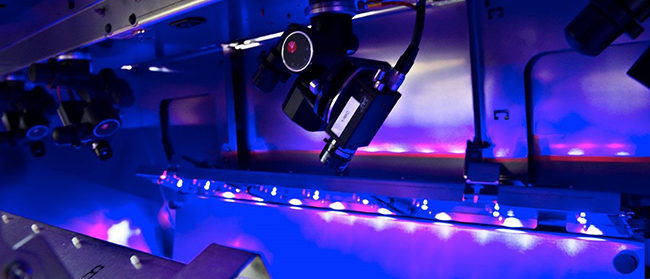
Farms can tap into AVA’s Agriculture Productivity Fund (APF) for upgrades and R&D. Find out more about the APF here.







